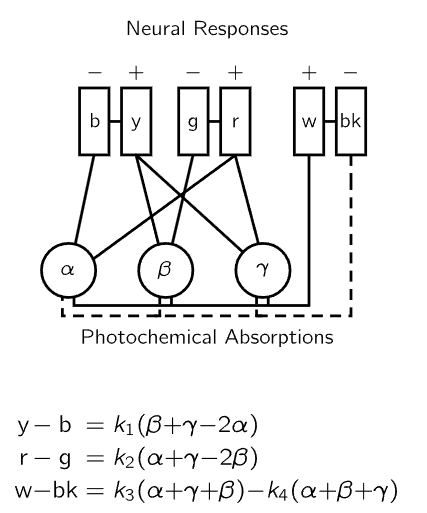
تاريخ الفيزياء

علماء الفيزياء


الفيزياء الكلاسيكية

الميكانيك

الديناميكا الحرارية


الكهربائية والمغناطيسية

الكهربائية

المغناطيسية

الكهرومغناطيسية


علم البصريات

تاريخ علم البصريات

الضوء

مواضيع عامة في علم البصريات

الصوت


الفيزياء الحديثة


النظرية النسبية

النظرية النسبية الخاصة

النظرية النسبية العامة

مواضيع عامة في النظرية النسبية

ميكانيكا الكم

الفيزياء الذرية

الفيزياء الجزيئية


الفيزياء النووية

مواضيع عامة في الفيزياء النووية

النشاط الاشعاعي


فيزياء الحالة الصلبة

الموصلات

أشباه الموصلات

العوازل

مواضيع عامة في الفيزياء الصلبة

فيزياء الجوامد


الليزر

أنواع الليزر

بعض تطبيقات الليزر

مواضيع عامة في الليزر


علم الفلك

تاريخ وعلماء علم الفلك

الثقوب السوداء


المجموعة الشمسية

الشمس

كوكب عطارد

كوكب الزهرة

كوكب الأرض

كوكب المريخ

كوكب المشتري

كوكب زحل

كوكب أورانوس

كوكب نبتون

كوكب بلوتو

القمر

كواكب ومواضيع اخرى

مواضيع عامة في علم الفلك

النجوم

البلازما

الألكترونيات

خواص المادة


الطاقة البديلة

الطاقة الشمسية

مواضيع عامة في الطاقة البديلة

المد والجزر

فيزياء الجسيمات


الفيزياء والعلوم الأخرى

الفيزياء الكيميائية

الفيزياء الرياضية

الفيزياء الحيوية

الفيزياء العامة


مواضيع عامة في الفيزياء

تجارب فيزيائية

مصطلحات وتعاريف فيزيائية

وحدات القياس الفيزيائية

طرائف الفيزياء

مواضيع اخرى
The sensation of color
المؤلف:
Richard Feynman, Robert Leighton and Matthew Sands
المصدر:
The Feynman Lectures on Physics
الجزء والصفحة:
Volume I, Chapter 36
2024-04-06
1677
In discussing the sense of sight, we have to realize that (outside of a gallery of modern art!) one does not see random spots of color or spots of light. When we look at an object we see a man or a thing; in other words, the brain interprets what we see. How it does that, no one knows, and it does it, of course, at a very high level. Although we evidently do learn to recognize what a man looks like after much experience, there are a number of features of vision which are more elementary but which also involve combining information from different parts of what we see. To help us understand how we make an interpretation of an entire image, it is worthwhile to study the earliest stages of the putting together of information from the different retinal cells. In the present chapter we shall concentrate mainly on that aspect of vision, although we shall also mention a number of side issues as we go along.
An example of the fact that we have an accumulation, at a very elementary level, of information from several parts of the eye at the same time, beyond our voluntary control or ability to learn, was that blue shadow which was produced by white light when both white and red were shining on the same screen. This effect at least involves the knowledge that the background of the screen is pink, even though, when we are looking at the blue shadow, it is only “white” light coming into a particular spot in the eye; somewhere, pieces of information have been put together. The more complete and familiar the context is, the more the eye will make corrections for peculiarities. In fact, Land has shown that if we mix that apparent blue and the red in various proportions, by using two photographic transparencies with absorption in front of the red and the white in different proportions, it can be made to represent a real scene, with real objects, rather faithfully. In this case we get a lot of intermediate apparent colors too, analogous to what we would get by mixing red and blue-green; it seems to be an almost complete set of colors, but if we look very hard at them, they are not so very good. Even so, it is surprising how much can be obtained from just red and white. The more the scene looks like a real situation, the more one is able to compensate for the fact that all the light is actually nothing but pink!

Fig. 36–1. When a disc like the above is spun, colors appear in only one of the two darker “rings.” If the spin direction is reversed, the colors appear in the other ring.
Another example is the appearance of “colors” in a black-and-white rotating disc, whose black and white areas are as shown in Fig. 36–1. When the disc is rotated, the variations of light and dark at any one radius are exactly the same; it is only the background that is different for the two kinds of “stripes.” Yet one of the “rings” appears colored with one color and the other with another. 1 No one yet understands the reason for those colors, but it is clear that information is being put together at a very elementary level, in the eye itself, most likely.
Almost all present-day theories of color vision agree that the color-mixing data indicate that there are only three pigments in the cones of the eye, and that it is the spectral absorption in those three pigments that fundamentally produces the color sense. But the total sensation that is associated with the absorption characteristics of the three pigments acting together is not necessarily the sum of the individual sensations. We all agree that yellow simply does not seem to be reddish green; in fact, it might be a tremendous surprise to most people to discover that light is, in fact, a mixture of colors, because presumably the sensation of light is due to some other process than a simple mixture like a chord in music, where the three notes are there at the same time and if we listen hard, we can hear them individually. We cannot look hard and see the red and the green.
The earliest theories of vision said that there are three pigments and three kinds of cones, each kind containing one pigment; that a nerve runs from each cone to the brain, so that the three pieces of information are carried to the brain; and then in the brain, anything can happen. This, of course, is an incomplete idea: it does no good to discover that the information is carried along the optic nerve to the brain, because we have not even started to solve the problem. We must ask more basic questions: Does it make any difference where the information is put together? Is it important that it be carried right up into the brain in the optic nerve, or could the retina do some analysis first? We have seen a picture of the retina as an extremely complicated thing with lots of interconnections (Fig. 35–2) and it might make some analyses.
As a matter of fact, people who study anatomy and the development of the eye have shown that the retina is, in fact, the brain: in the development of the embryo, a piece of the brain comes out in front, and long fibers grow back, connecting the eyes to the brain. The retina is organized in just the way the brain is organized and, as someone has beautifully put it, “The brain has developed a way to look out upon the world.” The eye is a piece of brain that is touching light, so to speak, on the outside. So, it is not at all unlikely that some analysis of the color has already been made in the retina.
This gives us a very interesting opportunity. None of the other senses involves such a large amount of calculation, so to speak, before the signal gets into a nerve that one can make measurements on. The calculations for all the rest of the senses usually happen in the brain itself, where it is very difficult to get at specific places to make measurements, because there are so many interconnections. Here, with the visual sense, we have the light, three layers of cells making calculations, and the results of the calculations being transmitted through the optic nerve. So we have the first chance to observe physiologically how, perhaps, the first layers of the brain work in their first steps. It is thus of double interest, not simply interesting for vision, but interesting to the whole problem of physiology.
The fact that there are three pigments does not mean that there must be three kinds of sensations. One of the other theories of color vision has it that there are really opposing color schemes (Fig. 36–2). That is, one of the nerve fibers carries a lot of impulses if there is yellow being seen, and less than usual for blue. Another nerve fiber carries green and red information in the same way, and another, white and black. In other words, in this theory someone has already started to make a guess as to the system of wiring, the method of calculation.

Fig. 36–2. Neural connections according to an “opponent” theory of color vision.
The problems we are trying to solve by guessing at these first calculations are questions about the apparent colors that are seen on a pink background, what happens when the eye is adapted to different colors, and also the so-called psychological phenomena. The psychological phenomena are of the nature, for instance, that white does not “feel” like red and yellow and blue, and this theory was advanced because the psychologists say that there are four apparent pure colors: “There are four stimuli which have a remarkable capacity to evoke psychologically simple blue, yellow, green, and red hues respectively. Unlike sienna, magenta, purple, or most of the discriminable colors, these simple hues are unmixed in the sense that none partakes of the nature of the other; specifically, blue is not yellowish, reddish, or greenish, and so on; these are psychologically primary hues.” That is a psychological fact, so-called. To find out from what evidence this psychological fact was deduced, we must search very hard indeed through all the literature: In the modern literature all we find on the subject are repeats of the same statement, or of one by a German psychologist, who uses as one of his authorities Leonardo da Vinci, who, of course, we all know was a great artist. He says, “Leonardo thought there were five colors.” Then, looking still further, we find, in a still older book, the evidence for the subject. The book says something like this: “Purple is reddish-blue, orange is reddish-yellow, but can red be seen as purplish-orange? Are not red and yellow more unitary than purple or orange? The average person, asked to state which colors are unitary, names red, yellow, and blue, these three, and some observers add a fourth, green. Psychologists are accustomed to accept the four as salient hues.” So that is the situation in the psychological analysis of this matter: if everybody says there are three, and somebody says there are four, and they want it to be four, it will be four. That shows the difficulty with psychological researches. It is clear that we have such feelings, but it is very difficult to obtain much information about them.
So, the other direction to go is the physiological direction, to find out experimentally what actually happens in the brain, the eye, the retina, or wherever, and perhaps to discover that some combinations of impulses from various cells move along certain nerve fibers. Incidentally, primary pigments do not have to be in separate cells; one could have cells in which are mixtures of the various pigments, cells with the red and the green pigments, cells with all three (the information of all three is then white information), and so on. There are many ways of hooking the system up, and we have to find out which way nature has used. It would be hoped, ultimately, that when we understand the physiological connections, we will have a little bit of understanding of some of those aspects of the psychology, so we look in that direction.
_______________________________________________________________
Margin
1- The colors depend on speed of rotation, on the brightness of illumination, and to some extent on who looks at them and how intently he stares at them.















 قسم الشؤون الفكرية يصدر مجموعة قصصية بعنوان (قلوب بلا مأوى)
قسم الشؤون الفكرية يصدر مجموعة قصصية بعنوان (قلوب بلا مأوى) قسم الشؤون الفكرية يصدر مجموعة قصصية بعنوان (قلوب بلا مأوى)
قسم الشؤون الفكرية يصدر مجموعة قصصية بعنوان (قلوب بلا مأوى) قسم الشؤون الفكرية يصدر كتاب (سر الرضا) ضمن سلسلة (نمط الحياة)
قسم الشؤون الفكرية يصدر كتاب (سر الرضا) ضمن سلسلة (نمط الحياة)

















